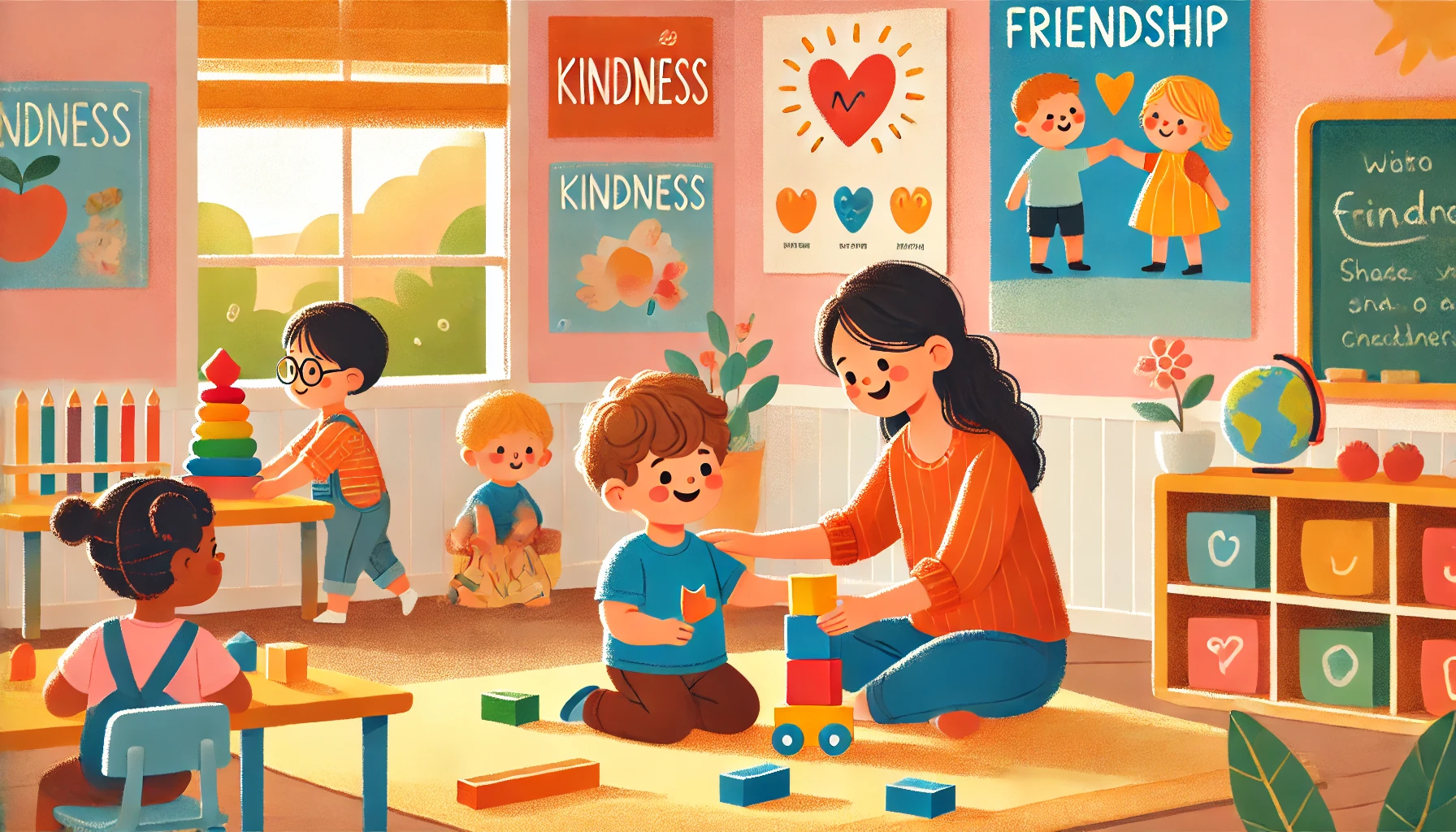How to Teach Young Children About Being a Good Friend
Friendship is one of the most meaningful parts of childhood—and learning how to be a good friend is a skill that helps kids build strong, positive relationships. Young children are still learning how to share, cooperate, and communicate, so teaching them friendship skills through stories, play, and real-life examples makes a lasting impact on their social development.
Why Teaching Friendship Skills Matters
- Promotes empathy and kindness
- Builds confidence in social situations
- Improves communication and emotional regulation
- Encourages cooperation and teamwork
- Reduces conflicts and misunderstandings
1. Define What It Means to Be a Good Friend
Start with clear, kid-friendly language.
Activity Idea:
Say: “A good friend is someone who is kind, listens, shares, and helps others.”
Give examples: “Helping someone when they’re sad is being a good friend.”
Ask: “What do you like most about your friends?”
What Kids Learn:
- Clear traits of friendship
- Awareness of their own actions
- Emotional connection to positive behavior
2. Role-Play Friendship Scenarios
Practice makes friendship skills stick.
Activity Idea:
Use dolls or puppets to act out situations like sharing toys, taking turns, and saying sorry.
Ask: “What would you do if your friend felt left out?”
Celebrate thoughtful responses.
What Kids Learn:
- How to respond in social situations
- Kindness in action
- Problem-solving and empathy
3. Read Books About Friendship
Stories offer powerful lessons.
Activity Idea:
Read books like Should I Share My Ice Cream? by Mo Willems or How Do Dinosaurs Stay Friends? by Jane Yolen.
Discuss: “What made the character a good friend?”
Draw pictures of friends helping each other.
What Kids Learn:
- Friendship in context
- Relatable lessons through characters
- Emotional literacy
4. Teach Kind Words and Gentle Actions
Friendship starts with how we treat others.
Activity Idea:
Make a list of “kind words” and decorate it with your child.
Use phrases like: “That was kind of you to say!”
Practice gentle touch with high-fives or hugs (when appropriate).
What Kids Learn:
- How words and actions affect others
- Tools for kindness and connection
- Comfort in expressing care
5. Encourage Sharing and Taking Turns
Essential for friendships to thrive.
Activity Idea:
Play cooperative games that require sharing and turn-taking.
Use a visual timer to help manage turns.
Praise: “You waited so patiently—it made your friend happy!”
What Kids Learn:
- Patience and fairness
- Joy in shared play
- Respect for others
6. Help Navigate Conflicts Calmly
Friendships include bumps—help them through it.
Activity Idea:
Teach phrases like: “I feel sad when…” and “Can we try again?”
Model calm problem-solving during disagreements.
Create a “Friendship Fix-It Box” with helpful phrases and strategies inside.
What Kids Learn:
- Emotional regulation
- Communication skills
- Resilience in relationships
7. Celebrate Friendship Moments
Reinforce what’s going well.
Activity Idea:
Make a “Friendship Wall” with drawings or notes about kind actions.
Highlight when your child is a good friend: “You included your friend so nicely today!”
Use a sticker chart or kindness jar.
What Kids Learn:
- Motivation through recognition
- Self-esteem from positive choices
- Joy in giving and receiving kindness
8. Be a Role Model for Healthy Friendships
Your actions teach the most.
Activity Idea:
Show kindness and empathy in your own relationships.
Narrate your social interactions: “I called my friend to check in—friends take care of each other.”
Talk about your own childhood friends.
What Kids Learn:
- Social cues through observation
- Long-term view of relationships
- Positive adult behavior patterns
Final Thoughts
Teaching young children how to be a good friend sets the stage for a lifetime of strong, compassionate relationships. Through storytelling, modeling, role-play, and daily reflection, children learn that friendship isn’t just about fun—it’s about care, understanding, and being there for each other. These early lessons help them connect, grow, and thrive in every part of their lives.
